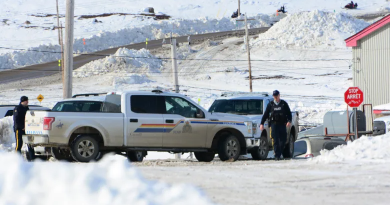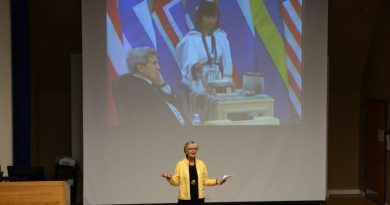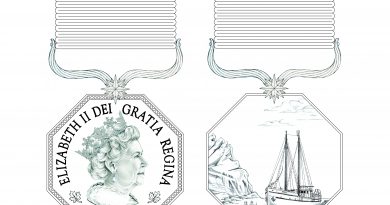Blog: As Norway takes over the Arctic Council, will members uphold its principles?
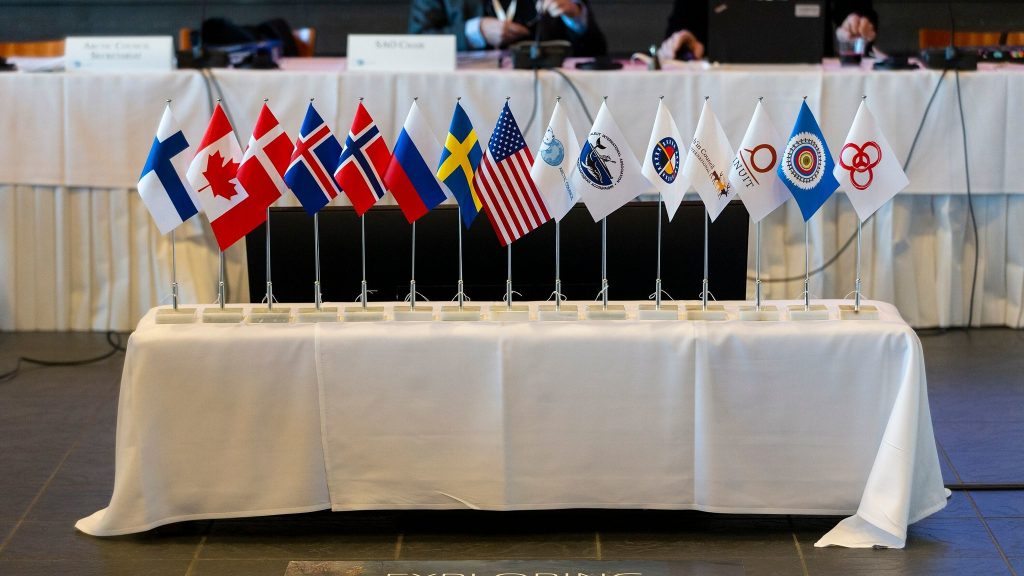
Will the Arctic 7, the Permanent Participants, and Observers promote and uphold the Arctic values implicit within the 1996 Ottawa Declaration?
On Thursday, Norway took over the Arctic Council chairmanship from Russia, which had presided over the region’s most important multilateral body for the past two years. The transfer of leadership took place in a hybrid meeting hosted in Salekhard, which the seven other member states’ Arctic ambassadors all attended virtually. The lack of political top brass broke with recent Arctic Council ministerials to which member states sent their foreign ministers.
Perhaps most memorably, in 2013, former Swedish Prime Minister Carl Bildt – all smiles and Icelandic sweaters – hosted a ministerial in Kiruna attended by former U.S. Secretary of State John Kerry, former Norwegian Minister of Foreign Affairs Espen Barth Eide (who also followed the “Arctic casual” dress code), and a jovial yet besuited Sergey Lavrov, Russian Foreign Minister.
Almost exactly a decade to the day after the Kiruna ministerial, at a high-rise hotel in downtown Tallinn this past weekend, I stepped into an elevator occupied by a journalist. I was in the capital of Estonia to attend the Lennart Meri Conference, a European security conference where military commanders, political leaders, and intelligence officials from both sides of the Atlantic and Baltic hobnob each spring. From sessions that range from 8:15 am breakfast panels to gin-and-tonic fuelled night-owl sessions lasting until 11:30 pm, participants discuss the one topic that is off-limits to the Arctic Council: security.
The elevator stopped again. The doors whisked open and in walked Carl Bildt. The journalist exchanged familiar hellos with the Swedish leader and updated him with the news that she had just bought an armored personnel carrier. I was a long ways from the Arctic – and so too was Bildt, who was now in a suit instead of a sweater.
Yet the Arctic, too, is far from its former self. Ten years after the backslapping 2013 Kiruna ministerial, where five Asian observers and Italy were accepted as observers and the Arctic states were becoming more comfortable with the region’s globalization, the circumpolar north has split in half.
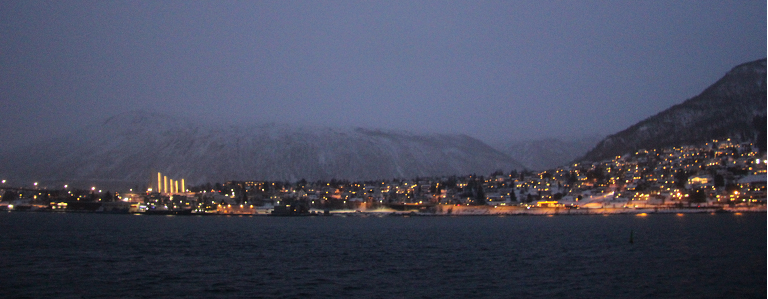
One need only compare the opening lines of the 2013 and 2023 joint statements to notice the resurrection of the Ice Curtain. The 2013 Kiruna Declaration began, “Recognizing the importance of maintaining peace, stability, and constructive cooperation in the Arctic.” In contrast, the 2023 Salekhard Declaration started with, “Recognizing the historic and unique role of the Arctic Council for constructive cooperation, stability and dialogue between people in the Arctic region.” While the word “historic” in the Salekhard Declaration likely meant “important and notable”, the adjective’s other meaning – association with the past – also applies.
With Norway now chair, the Arctic Council is in an easier position to reconvene its work on a suite of issues. Its mandate had expanded in the years following the body’s founding in 1996 with the signing of the Ottawa Declaration from an initial focus on environmental protection and sustainable development to search and rescue, scientific cooperation, and marine oil pollution preparedness and response. All of these issues require Russia’s participation to exceed at a circumpolar scale given that the country accounts for half of the region. Some 80% of gas production and 20% of Arctic oil production take place in Russia’s northern fields.
The so-called “Arctic 7”, however – the U.S., Canada, Iceland, Denmark, Norway, Sweden, and Finland – will not be able to formally engage the Russian government on topics such as cooperating on the environment and extraction, for the country continues to be a pariah to the West. A resourceful Norway may, however, leverage its history of finding alternative means to work with Russia, with which it shares a small but important border, as Gabriella Gricius explains in an astute analysis. Still, people-to-people exchange is likely to remain a fraction of its former self, with crossings back down to low levels not seen since Soviet times, the Barents Observer reports. Even then, in the early 1990s, travelers could take a four-hour catamaran journey between Kirkenes and Murmansk (as German tourist Thomas Bujack did), from where direct trains went on to Moscow. It’s hard to imagine such connectivity now.
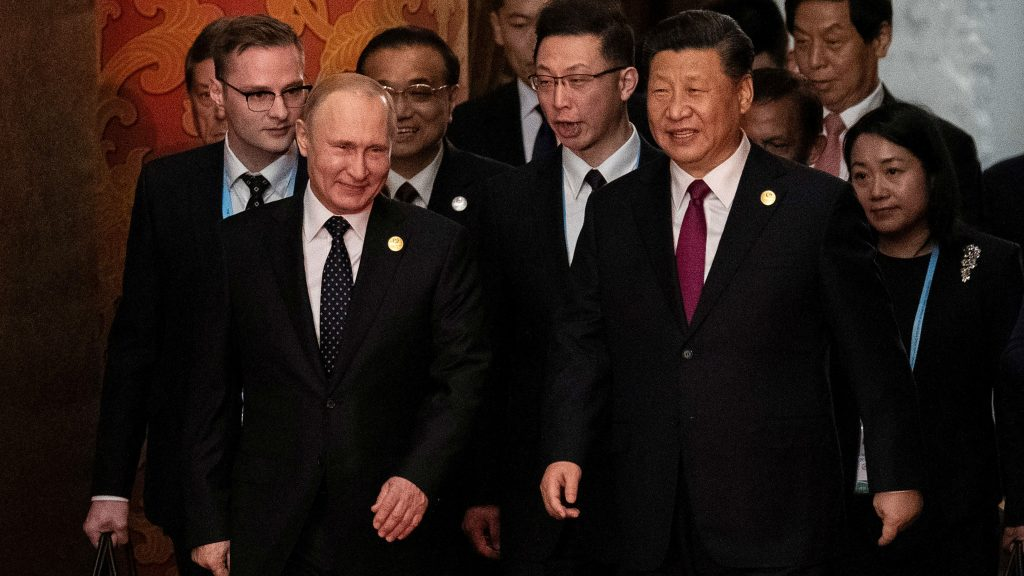
Instead, Norway may find Beijing trying to insert itself between Russia and the Arctic 7. China is seeking to step up its role as a mediator in Arctic governance. Last month, at the High North Dialogue in the north Norwegian city of Bodø, China’s Minister Counsellor expressed that his country wants to “play a constructive role in restoring the Arctic Council’s functions and “cooperation between all parties,” according to High North News. This is a change from a statement made last year by Gao Feng, China’s Special Representative for Arctic Affairs. During a public one-on-one conversation with former Icelandic President Olafur Grimssón last year, Feng controversially expressed doubt about the Arctic Council’s future as an international organization. “I really doubt that whether the presidency could be passed on to anybody, or, that Norway could take over. Because there is no procedure on that issue,” he asserted.
As the Arctic shrinks, Europe looks to expand
While Russia did, in the end, hand over the keys to the council to Norway without any apparent fuss, the Arctic is still a broken family. Just ten years ago, Norway opened the Permanent Secretariat of the Arctic Council in the gleaming northern city of Tromsø. Now, Norway is the latchkey kid coming home just as one of the household’s most important members has gone out for cigarettes and missile strikes.
As the Arctic is fracturing, Europe appears to be unifying and, potentially, on the verge of expanding. At the Lennart Meri Conference, President George H. W. Bush’s proclamation in Mainz, Germany in 1989 of his desire to see a “Europe whole and free” was repeated totemically. One panelist spoke of their hope for a “double eastward enlargement,” which would see Moldova, Belarus, and Ukraine eventually join the European Union and NATO. “This is very exciting. It’s a chance to expand our frontiers,” they enthused.
Another panelist fondly told the audience how, upon checking into their hotel room, for the first time at this conference, they were able to look out their window on the Gulf of Finland and “see NATO on both sides.”
If one were to stand on the eroding shores of the Arctic Ocean, the Arctic Council would be hard to spot beyond the polar horizon.
What are Arctic values?
Over clinking wine glasses and clicking cameras, at the last night of the conference in Tallinn, Oleksandr Korniyenko, First Deputy Chairman of the Verkhovna Rada (Parliament) of Ukraine, expressed, “Europe is not a geography. It’s a unity of principles.”
Extending this metaphor to the Arctic forces reckoning with not only where the region lies, but what its values are. One might start by reading Ottawa Declaration, which proclaims the eight Arctic states’ commitments to:
- Well-being of the inhabitants of the Arctic
- Sustainable development in the Arctic region, including economic and social development, improved health conditions and cultural wellbeing
- Protection of the Arctic environment
If we take these as the pillars of Arctic values, not only are Russia’s actions violating them. The Arctic 7 also risk compromising these principles as they revert to discourses of national security and militarization to rationalize increased resource extraction.
Unsurprisingly, Russian President Vladimir Putin is turning up the dials on oil and gas production in Siberia, especially in the east as Russia seeks out Asian buyers keen to buy discounted Russian oil. In recent months, Russia has passed Saudi Arabia as China’s top oil supplier. Last December, Putin opened the Kovykta natural gas field in eastern Siberia near Lake Baikal. First discovered in 1987, production at what was previously eastern Siberia’s largest undeveloped gas field will flow into the Power of Siberia gas pipeline to China.
Against geopolitical disorder, Norway and the U.S. push Arctic oil
Yet Arctic states that tout their environmentality are also seizing the opportunity to double down on fossil fuel extraction. In Norway, oil and gas companies are calling for expanding production in the country’s northern offshore in order to become a major supplier to the EU now that Russian imports have dropped from 50% to 20% of market share.
In the U.S., in March, President Joe Biden granted approval to ConocoPhillips’ Willow Project on Alaska’s North Slope. Three years prior, Biden said that drilling for oil in the Arctic would be a “disaster.” Now, his decision will allow drilling to go forward at three sites in the National Petroleum Reserve, with ConocoPhillips needing to use “chillers” to keep the permafrost frozen under its equipment. The Houston-based multinational corporation claimed in a press release “that the Willow project is estimated to produce 180,000 barrels of oil per day at its peak, decreasing American dependence on foreign energy supplies.” It does not mention, however, that nearly 60% of American oil imports come from its two friendly neighbors, Canada and Mexico.
With U.S. and European Union sanctions preventing the export of many parts to Russia’s oil and gas industry, at the Lennart Meri Conference, one attendee worried that a major ecological disaster could be looming. The Arctic Council was once concerned with preventing oil spills in the Arctic Ocean. Now, a more immediate worry might be one in Siberia, where Indigenous Peoples have already suffered from decades of extraction and disasters, including the massive oil spill near Norilsk in 2021.
Where does the Arctic begin and end?
In a recent article in Foreign Affairs, Oxford historian Timothy Garton Ash wrote, “Europe does not end at any clear lines—although at the North Pole it ends at a point—but merely fades away across Eurasia, across the Mediterranean, and, in some significant sense, even across the Atlantic.” His decision to strictly bound Europe at the top of the world sits on shaky ground. Of all the geographical features he mentions, the North Pole is the most contrived. Between the end of the Cold War and 2022, the Arctic was in fact a crossroads for exchanging European norms – if more so around the environment and science – but Indigenous, North American, Russian, and even Asian ideas, too.
As Norway takes over the Arctic Council chairmanship, it will be up to the Arctic 7, the Permanent Participants, and Observers to promote and uphold the Arctic values implicit within the Ottawa Declaration. With the High North “re-emerging as a key theatre,” to paraphrase the United Kingdom Royal Navy, the region may not be the “zone of peace” that Soviet Premier Mikhail Gorbachev envisioned in 1987. But the western Arctic states should not let it become a fractured zone of sacrifice either. Maintaining the Arctic as a region requires recommitting to the Arctic values that were gradually built beginning in the 1990s rather than slipping back into national impulses to extraction and militarization.
This post first appeared on Cryopolitics, an Arctic News and Analysis blog.
Related stories from around the North:
Canada: Norway committed to keeping Arctic Council as leading forum on North says ambassador, CBC News
Denmark: Arctic security key in upcoming defence agreement: acting Danish defence minister, Eye on the Arctic
Finland: Russian cyber attacks, espionage pose growing threat to Finnish national security, Yle news
Greenland: Growing focus on Arctic puts Greenland at higher risk of cyber attacks: assessment, Eye on the Arctic
Iceland: NATO anti-submarine warfare exercise underway in North Atlantic, Eye on the Arctic
Norway: Russia-China coast guard cooperation big step, says Arctic security expert, The Independent Barents Observer
Russia: Russia’s growing dependence on China altering dynamics in Arctic, UK committee hears, Eye on the Arctic
Sweden: Russian spy ships surveying Nordic energy infrastructure, Radio Sweden
United States: U.S. nominates Alaskan as first Arctic ambassador, Eye on the Arctic


